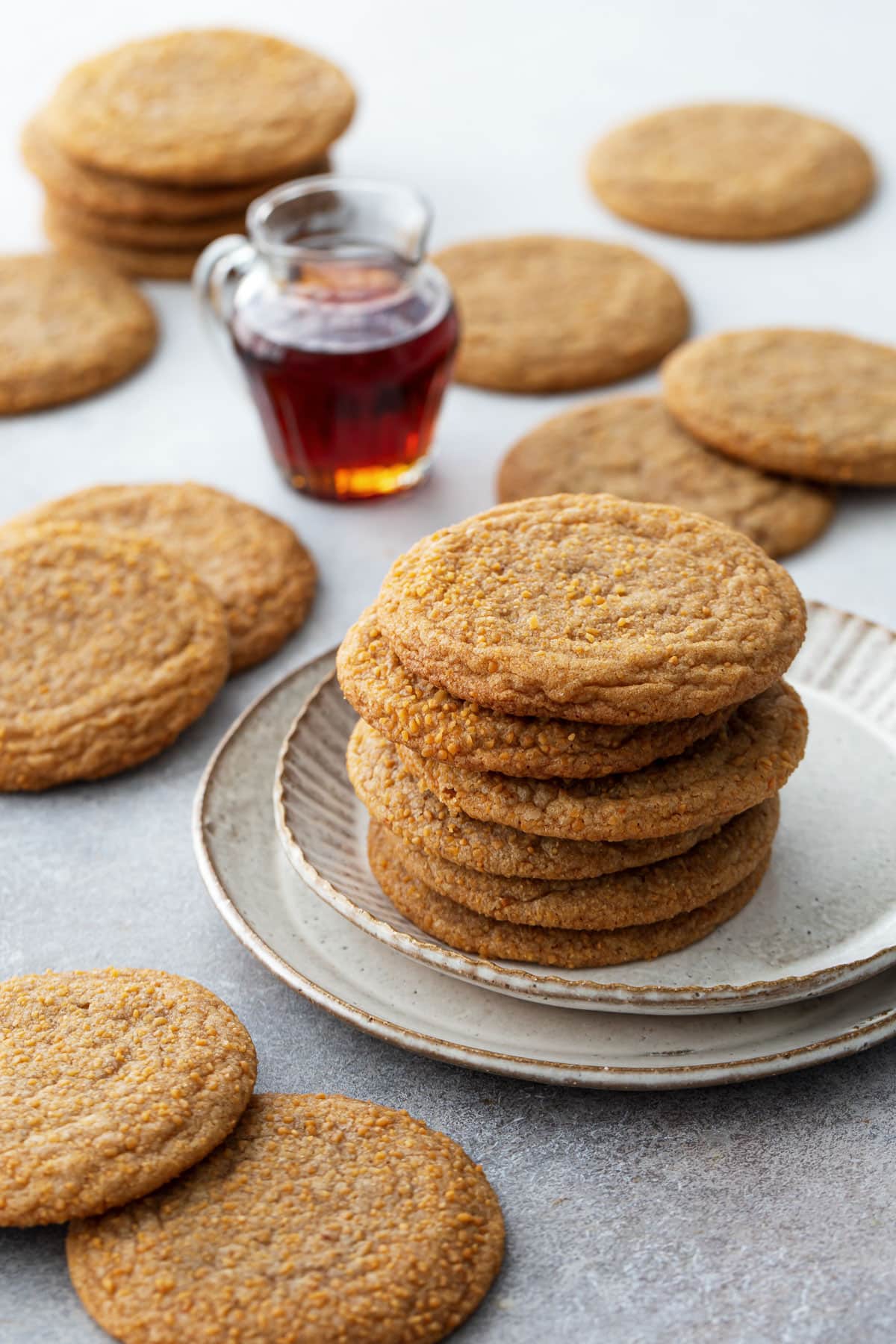Wondering how to buy sustainable fish or sustainable seafood but not sure where to start? Here’s a quick guide to get educated fast.
Is eating sustainable fish and seafood something you’re interested in? The hard part is that once you get to the grocery store, there are so many options and labels that it’s completely overwhelming. Is farmed fish sustainable fish, or should it all be wild caught? What about fresh fish versus frozen: what’s better? Are there types of fish I should avoid?
Alex and I have been eating most vegetarian for the past 10 years (and most of the recipes in this space are vegetarian), but we do occasionally eat sustainable fish or meat. The thing is, we realized there were still some intricacies about buying sustainable fish and seafood that we didn’t understand. Since Alex and I wanted to learn more, we figured you might want to hear it too! So, we’ve called in an expert to set us straight: and luckily, we happen to have a friend who’s an expert on the subject. He’s JD Schuyler, director of the documentary Last Man Fishing (Spring 2019) and face behind Skyler Creative, who’s spent the last 3 years of his life researching this topic. We caught up with JD to ask him about all things sustainable fish and seafood, and his answers are simple, straightforward and insightful.
What are things to look for when buying sustainable fish / sustainable seafood?
Buying sustainable fish and seafood can feel overhwhelming, but there are a few main things to look for to get started:
- US-caught: For example, buy Gulf shrimp rather than Indonesian shrimp. Overall, the US manages its fisheries better than most countries and US-caught fish are the best bet. 90% of the seafood we eat in the US is imported. Imported seafood runs the risk of being overfished, caught under unfair labor practices, or farmed in environmentally harmful ways. Imported seafood also hurts American fishermen and seafood producers. (This point is geared towards American consumers.)
- Sustainable gear types: How your fish is caught matters. Look for hook and line as one example of a sustainable gear type. Bottom trawling is considered the most destructive and least sustainable method.
- Fresh vs. frozen: One big misconception about fish is that “fresh is best.” As soon as an animal dies it begins to decompose. Freezing suspends this process. If a fish is frozen on board the boat on which it was caught and stays frozen until it gets to your kitchen, it will be a much higher quality than a raw fish that has taken a week (degrading every moment after being caught) to get to your plate.
Salmon en Papillote with Roasted Potatoes
Where would you recommend is the best place to buy seafood?
Most seafood counters at grocery stores exemplify the broken seafood system which has too many middlemen and lacks transparency. Always ask where and how your seafood was caught. Community Supported Fisheries are the seafood version of a CSA. CSF’s around the country provide a direct way to purchase quality sustainable fish that reflect transparency and a fair wage to American fishermen. LocalCatch.org has a map that helps you find a CSF near you.
Is farmed fish bad or good?
The farmed fish conversation is complicated because each species and origin represents different questions. If you want only one piece of advice: always always buy wild salmon. Farmed salmon is usually marketed as sustainable fish; however, the fish are fed other wild forage fish, which are not sustainable seafood. The farmed salmon model needs to account for their food supply and their environmental impacts. Salmon kept in pins in the ocean can introduce disease and parasites to wild salmon stocks. Farmed fish can be done well, but it needs more transparency before anyone can get excited about it.

Baked Salmon with Chimichurri Sauce
Are there types of seafood I should never buy?
Yes! Refer to the Monterey Bay Aquarium Seafood Watch List as a reference. This list is not faultless and I’ve heard plenty of complaints from fishermen about the list. But on the whole, I think they attempt to inform the consumer in an honest, effective way.
What other things should I know about how to be a responsible consumer of sustainable fish & seafood?
Being a responsible consumer can be overwhelming and expensive, but knowing how your seafood was caught and how it got to your plate is important. You can be confident that the extra money spent on sustainable fish and seafood will help support values of transparency, sustainability, and fairness. Another great resource is Ecotrust’s Four Simple Steps for Better Seafood Choices.

Thanks again to JD for helping us to understand sustainable fish and seafood! Follow along with his journey at Last Man Fishing and Skyler Creative.

Roasted Tomato Shrimp Over Creamy Polenta
Looking for sustainable fish and seafood recipes?
Want to try out your newly knowledge about sustainable fish and seafood at the grocery store? Here are some recipes to start with:
- Baked Salmon with Chimichurri Sauce
- Salmon en Papillote with Roasted Potatoes
- Baked Shrimp with Tomatoes and Feta
- Roasted Tomato Shrimp Over Creamy Polenta
- Simple Shrimp and Artichoke Paella
- Open Fire Seafood Paella
- Grilled Shrimp and Vegetable Skewers
A Couple Cooks - Recipes for Healthy & Whole Living
from A Couple Cooks https://ift.tt/2B1DIrm







0 comments:
Post a Comment